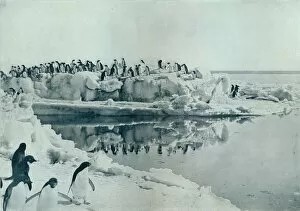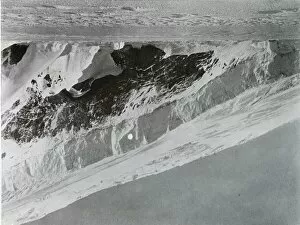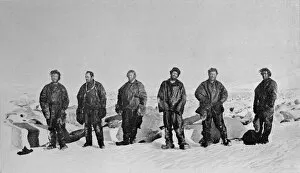George Murray Levick Collection
George Murray Levick was a talented artist and member of the ill-fated Terra Nova Expedition led by Captain Robert Falcon Scott
All Professionally Made to Order for Quick Shipping
George Murray Levick was a talented artist and member of the ill-fated Terra Nova Expedition led by Captain Robert Falcon Scott. His artwork captured the breathtaking beauty and harsh realities of life in Antarctica during the early 20th century. In his painting "Hansens Grave On Cape Adare, " Levick pays tribute to fallen comrades, reminding us of the sacrifices made in pursuit of scientific discovery. The "Launch of the Pram" showcases Levick's attention to detail as he captures a pivotal moment in expedition preparations. Another piece, "Skua Gulls Fighting Over Some Blubber, " depicts nature's struggle for survival amidst unforgiving conditions. Levick also documented the playful side of Antarctic wildlife with his painting "Penguins Promenade. " This charming scene transports us into their world as they waddle across icy terrain. In contrast, his work titled "Dugdale Glacier" reveals the awe-inspiring grandeur and power of nature that surrounded him. The paintings "The Two Kayaks Ashore" and "Campbell Afloat in a Kayak" demonstrate Levick's ability to capture human resilience against an unforgiving landscape. These images showcase both solitude and camaraderie within this extreme environment. In addition to capturing moments from daily life on expeditions, Levick also depicted more intimate scenes such as Browning at the Igloo Door. " This piece offers a glimpse into their living quarters and highlights their reliance on blubber lamps for light. Levick's artistry extends beyond documenting people and animals; he also portrayed stunning natural formations like crevasses in pieces such as "Levicks Camp Among Crevasses" and "Crevassed Ice at Entrance to Priestley Glacier. " These works convey both danger and beauty simultaneously. Lastly, his painting titled "Ice Structure" provides viewers with an abstract representation that invites contemplation about Antarctica's ever-changing landscapes.






























